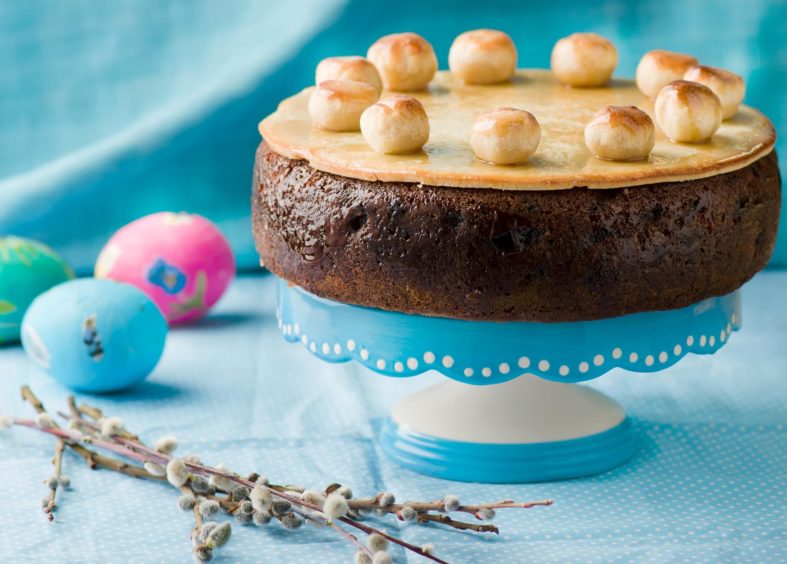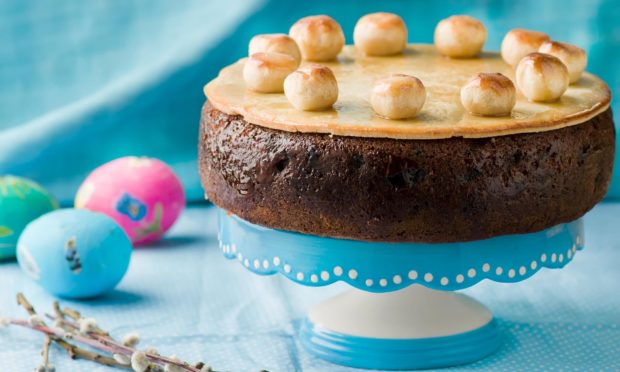Martin Hollis, executive chef at the Old Course Hotel St Andrews, makes a traditional offering for Easter Sunday.
A Simnel Cake is a moist fruit cake topped with sweet, pastel-yellow marzipan, and is the ultimate Easter treat.
Traditionally made for Mothering Sunday, halfway through Lent, Simnel cake is usually decorated with marzipan balls to represent the apostles. When people were fasting during Lent, Mothering Sunday was usually in the middle of the fast and offered a respite from 40 days of religious austerity.
Make your own
Here is a recipe to make your own. You will need: 100g red or natural glacé cherries; 225g softened butter; 225g light muscovado sugar; 4 large eggs; 225g self-raising flour; 225g sultanas; 100g currants; 50g chopped candied peel; grated rind of 2 lemons; and 2 level tsp ground mixed spice.
To make the filling and topping, you will need: 450g almond paste or marzipan; 2 tbsp apricot jam; 1 large egg, beaten, to glaze.
To make the cake, first Preheat the oven to 150°C, fan 130°C, gas 2. Grease a 20cm-deep round cake tin and line the base and sides with baking paper.

Cut the cherries into quarters, then rinse under running water in a sieve. Drain, then dry thoroughly on kitchen paper.
Beat all the remaining cake ingredients together in a large bowl. Tip half of the mixture into the prepared tin and level the surface.
Roll one third of the almond paste or marzipan to a circle the size of the cake tin, then place it on top of the cake mixture. Spoon over the remaining cake mixture and level the surface.
Bake for about 2½ hours until well risen, evenly browned and firm to the touch. Cover with foil after 1 hour if the top is browning too quickly.
Leave to cool in the tin for 10 minutes, then turn out, peel off the baking paper and finish cooling on a wire rack. Warm the apricot jam in a small pan then, when the cake is cool, brush the jam over the top of the cake.
Roll out half the remaining almond paste to fit the top of the cake. Press it on firmly and crimp the edges to decorate. Mark a criss-cross pattern in the top with a sharp knife.
Form 11 equal-sized balls from the remaining almond paste. Brush the almond paste with beaten egg and arrange the balls around the edge of the cake.
Brush the tops of the balls with beaten egg, too, then place the cake under a hot grill to turn the almond paste golden.
